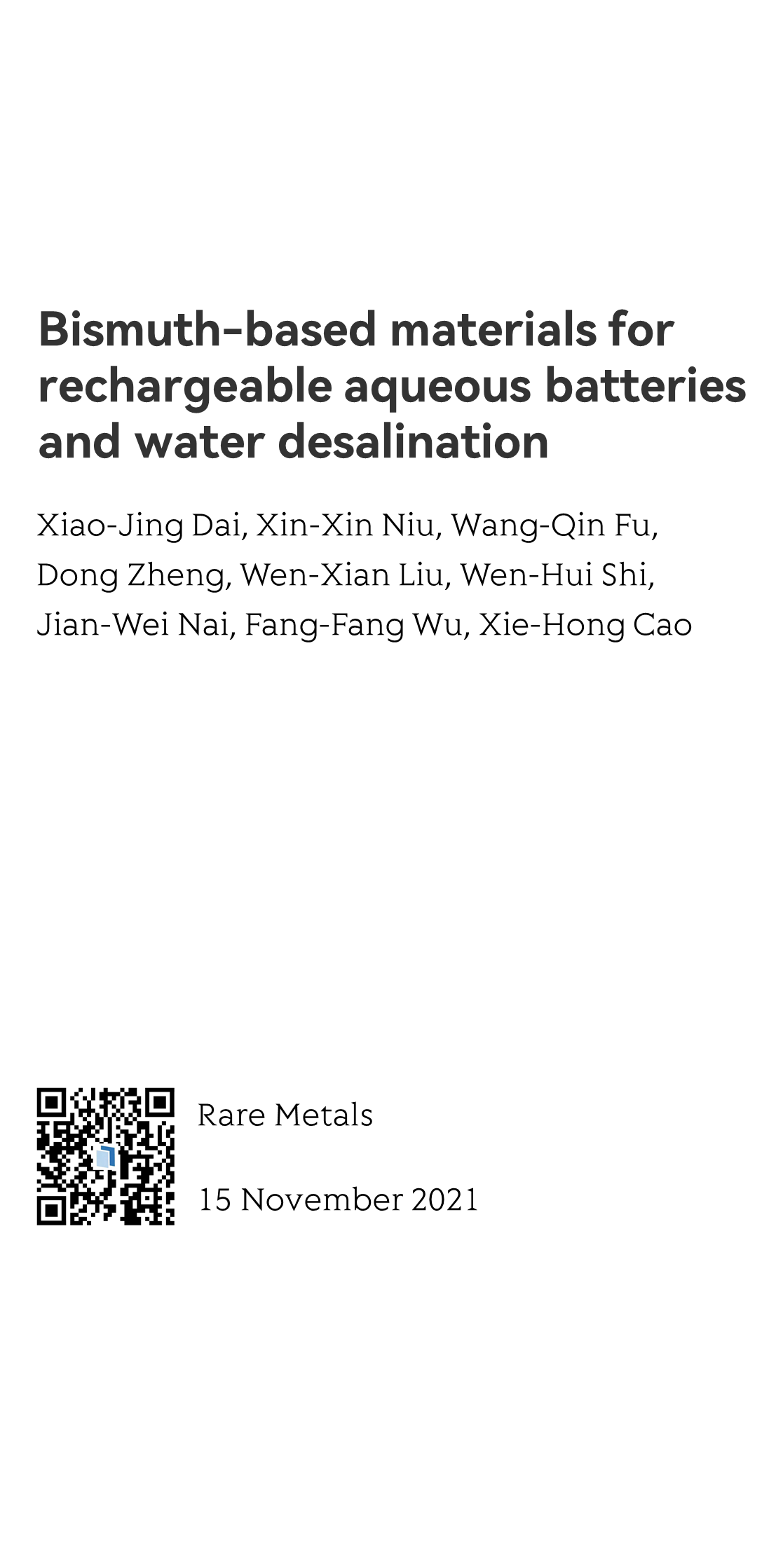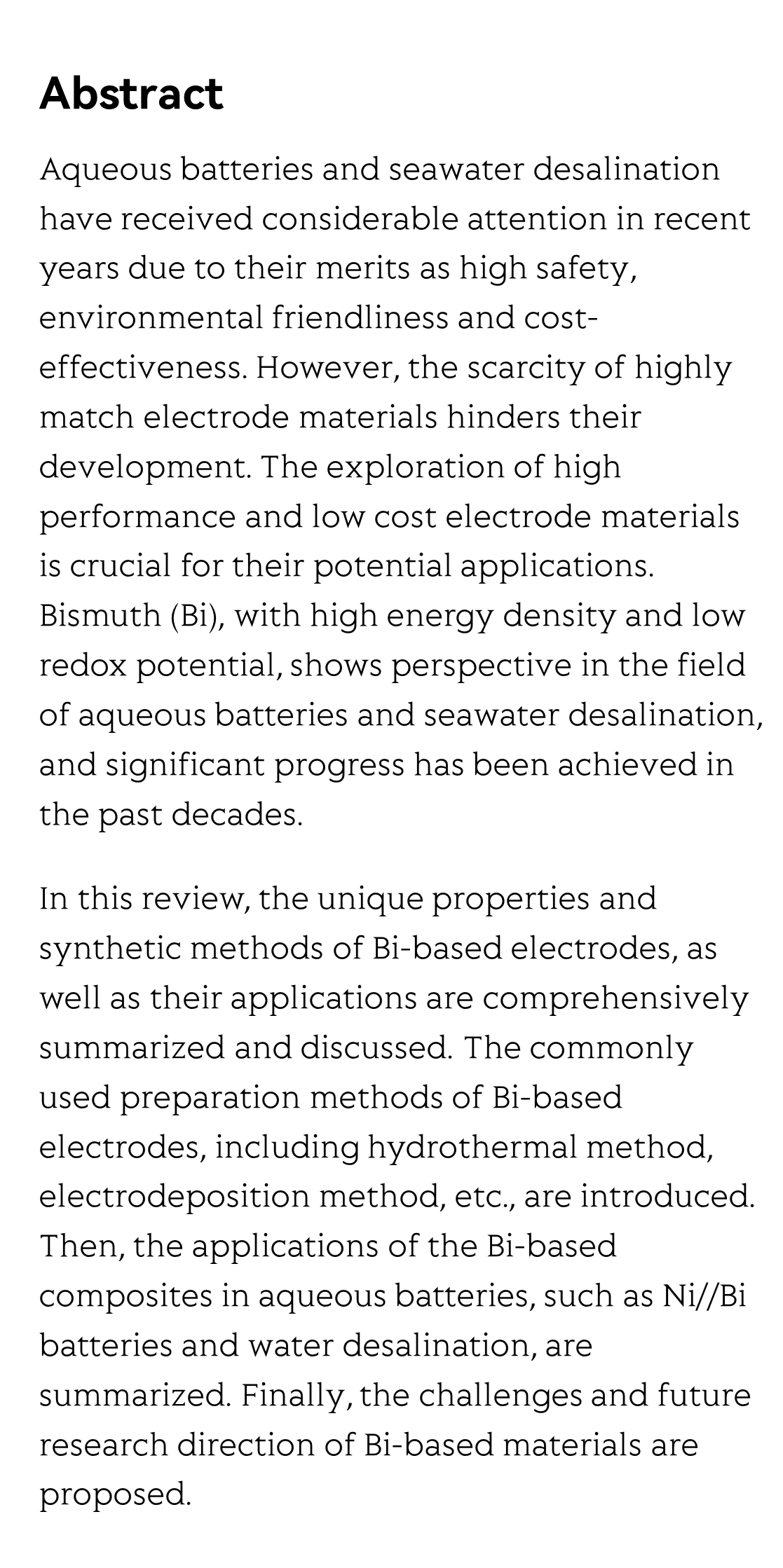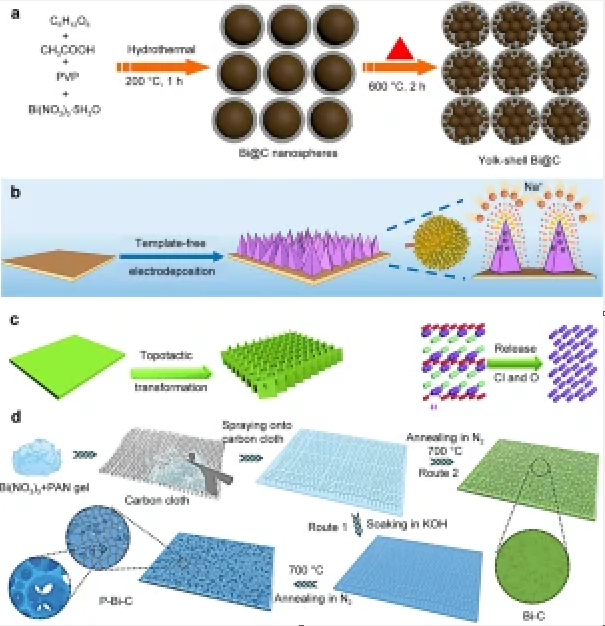(Peer-Reviewed) Bismuth-based materials for rechargeable aqueous batteries and water desalination
Xiao-Jing Dai 戴晓婧 ¹, Xin-Xin Niu 牛昕欣 ¹, Wang-Qin Fu 傅王秦 ¹, Dong Zheng 郑冬 ¹, Wen-Xian Liu 刘文贤 ¹, Wen-Hui Shi 施文慧 ², Jian-Wei Nai ¹, Fang-Fang Wu 毋芳芳 ¹, Xie-Hong Cao 曹澥宏 ¹
¹ School of Materials Science and Engineering, Zhejiang University of Technology, Hangzhou, 310014, China
中国 杭州 浙江工业大学材料科学与工程学院
² Center for Membrane Separation and Water Science & Technology, College of Chemical Engineering, Zhejiang University of Technology, Hangzhou, 310014, China
中国 杭州 浙江工业大学膜分离与水科学技术中心
Abstract
Aqueous batteries and seawater desalination have received considerable attention in recent years due to their merits as high safety, environmental friendliness and cost-effectiveness. However, the scarcity of highly match electrode materials hinders their development. The exploration of high performance and low cost electrode materials is crucial for their potential applications. Bismuth (Bi), with high energy density and low redox potential, shows perspective in the field of aqueous batteries and seawater desalination, and significant progress has been achieved in the past decades.
In this review, the unique properties and synthetic methods of Bi-based electrodes, as well as their applications are comprehensively summarized and discussed. The commonly used preparation methods of Bi-based electrodes, including hydrothermal method, electrodeposition method, etc., are introduced. Then, the applications of the Bi-based composites in aqueous batteries, such as Ni//Bi batteries and water desalination, are summarized. Finally, the challenges and future research direction of Bi-based materials are proposed.
Flicker minimization in power-saving displays enabled by measurement of difference in flexoelectric coefficients and displacement-current in positive dielectric anisotropy liquid crystals
Junho Jung, HaYoung Jung, GyuRi Choi, HanByeol Park, Sun-Mi Park, Ki-Sun Kwon, Heui-Seok Jin, Dong-Jin Lee, Hoon Jeong, JeongKi Park, Byeong Koo Kim, Seung Hee Lee, MinSu Kim
Opto-Electronic Advances
2025-09-25
Dual-frequency angular-multiplexed fringe projection profilometry with deep learning: breaking hardware limits for ultra-high-speed 3D imaging
Wenwu Chen, Yifan Liu, Shijie Feng, Wei Yin, Jiaming Qian, Yixuan Li, Hang Zhang, Maciej Trusiak, Malgorzata Kujawinska, Qian Chen, Chao Zuo
Opto-Electronic Advances
2025-09-25





